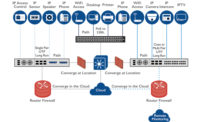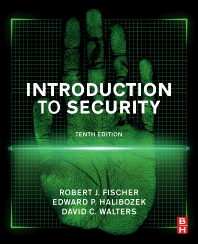In the less populated northern regions of Saskatchewan, summer temperatures can reach 38 degrees Celsius. Winters at the north end of the province may mean highs not breaking more than -17 degrees Celsius for weeks at a time with lows reaching -45 degrees Celsius or even colder. In locations like these throughout Canada with extreme temperatures, weather conditions such as tornadoes or high winds, and remote environments, implementing a viable outdoor security plan that can run continuously, 365 days a year, is a difficult achievement.
“Winter is our biggest challenge out here,” says Helen Perry-Raycraft, marketing and sales coordinator at Brigadier Security Systems Ltd., Saskatoon, Saskatchewan. “Technology is continually getting better, but when temperatures drop to -40 or -50 [degrees C], there is an understanding that outdoor security solutions may not function. One of the most important things to focus on is the maintenance of the system so that you’re clear everything is replaced and in working order before the cold weather comes.”
Despite the challenges, Brigadier Security Systems has been successful with a number of outdoor security solutions, including cameras, fencing, wireless Videofied products and SecurTek monitoring solutions. Perry-Raycraft adds that, especially with extreme temperatures, the brands and types of products used become very important. “We definitely continue to see more requests for things like solar power or remote video capabilities. Battery-powered systems are also a big one, but with our cold winters we have to make sure that we use the best available products to make it through those times because some are much better than others,” she acknowledges.
But extreme temperatures are not the only challenge. Outdoor security or perimeter security applications run the gamut in Canada from in-city construction sites and businesses, to waterfront applications and transportation hubs, to semi-remote and completely remote hydros, mines or pipeline facilities. Challenges include weather and other environmental factors, power sources, data communications, and false alarms. Over the past decade, many of these sites have ramped up physical security on the perimeter to protect against vandalism and acts of terrorism, as well as to ensure the general safety and security of the equipment and would-be trespassers.
“In many applications today, especially with long distances, large areas, remote locations or industrial sites, the main concerns are theft and trespassing as well as safety, because the result could be loss of a life,” says Guy Calb, director of integrated systems at Paladin Security Systems, Burnaby, British Columbia.
“There are serious ramifications for breaches at some of these sites,” says Patrick Smyth, vice president of safety and engineering at the Canadian Energy Pipeline Association (CEPA), Calgary, Alberta. “For example, if someone tampers with critical energy infrastructure, they are escalating the risk to themselves, to the neighboring people and public at large, and to the environment. Our member companies understand that and are always looking into the evolving layers of technology to mitigate those hazards that they identify.” Between the 12 transmission pipeline companies that CEPA represents, they operate about 117,000 kilometers of pipeline in Canada and 14,000 kilometers in the U.S. Security plans at each site vary widely based on individual needs and, in some cases, even include remotely operated vehicles flying over the sites for surveillance, according to Smyth.
When it comes to identifying the risks and security needs of an outdoor/perimeter application, some integrators and end user organizations insist that a holistic approach is the best course. “If you haven’t done your due diligence at every level, and you’ve already got the ‘bad guy’ within your organization, then no system will do its job,” says Daniel Ulrich, vice president of business development at Profile Security Integrated Services Inc., Toronto.
Some organizations, particularly large ones or those with tight government regulations, have already completed a threat risk vulnerability analysis or know what their security needs are before consulting with an integrator. “We take a strategic approach of having a toolbox for our security measures and within our toolbox we have different solutions based on specific conditions of a facility, including location, number of people working there, network capacity and other elements — and that becomes a matrix,” explains Arik Garber, manager of security operations at BC Hydro, the power utility for the province of British Columbia, which encompasses 31 hydroelectric facilities and three thermal generating plants.
“The level and security measures we will apply depend where each site falls within the matrix,” he adds. For example, Garber said that after determining that it needed to maximize its security measures at a location, the organization asked Paladin Security Systems to install an ALDS advanced laser detection system on the perimeter, which uses laser radar technology and automatic video tracking along with real-time position tracking.
While identifying the risks and security needs of an organization or application may take diligence and effort, finding the solution to overcoming an application’s challenges can take a lot of careful planning and creativity. With weather and other environmental factors, pure long distances, power sources, data communications, false alarms and budget constraints, integration companies and end users have to consistently think outside the box.
“One of the challenges we keep running across is just the sheer distance,” says Rob Plume, director of sales and technology - client solutions, at G4S Secure Integration, a global company with Canadian headquarters in Toronto. “Customers want to cover a wide amount of space with not a lot of money to spend, so there is usually a compromise.”
Plume said that layering different technologies together — such as video with fence detection or keypads with access cards for gate entry — is the best solution for detection, early warning and mitigating false alarms. “If you have two football fields of space to cover, you can’t do that with just one piece of technology. So it’s always a blend of technologies for early warning, followed by alarm validation. You want to detect them, slow them down, and then intersect them,” he explains.
“There has to be a lot of redundancy in outdoor applications,” says Alan Osz, senior security advisor at Convergint Technologies Ltd. in Calgary, Alberta. The company provides outdoor security solutions for a number of commercial industrial clients in mining, oil, gas and airport facilities. “Sometimes, particularly with oil and gas, they have perimeters with 40, 50 or even 100 kilometers and a lot of times the sites are very remote, so you have to consider that when you are creating a plan,” Osz describes. He says that for some applications such as these, a good solution is thermal imaging cameras with video analytics, combined with color PTZ cameras.
“The thermal imaging and video analytics can generally pick up the size of a person moving at a very long range, but the images are not very useful if you have to verify what is going on. In that case, you need a good color PTZ camera to then facilitate the verification of the alarm,” Osz says. However, PTZ cameras bring with them a whole new set of challenges in these environments, including higher power requirements, according to Osz.
In the event of power difficulties, Osz continues, one solution that has proven low maintenance and runs using clean technology are fuel cell generators. In areas that cannot get enough solar energy charged to power a system 24/7, sources that switch between fuel cell and solar are good alternatives.
More Solutions
Other common challenges with perimeter applications, according to Sachin Khanna, product portfolio manager for Bosch Security Systems, Fairport, N.Y., are limited visibility due to illumination problems or environmental factors, as well as vibration and background noise with video solutions. “Low light cameras or thermal cameras can help with this and there are also integrated optic and thermal cameras, which can give users the best of both worlds,” Khanna says.
With so many viable technology solutions on the market, budget becomes the great divider in many cases. “A lot of the challenge [with perimeter security] is the cost factor,” says Ulrich. “You have to be able to have a return on the investment.”
Keith Jentoft, president of RSI Video Technologies, St. Paul, Minn., says, “Outdoor security has always been needed but the assets at risk have to justify the cost of an outdoor system. What has changed over time is that outdoor security options have become less expensive.”
In the end, managing expectations as well as embracing a philosophy of flexibility and willingness to change in the future are consequential factors for success with outdoor applications.
“It’s a challenge,” says Dan Rothrock, senior vice president of strategic accounts globally at Zenitel, the company that makes brand Vingtor-Stentofon, with global headquarters in Oslo, Norway. “You do your audits every year and ask yourself, ‘How do I improve security and protect better than last year?’ The challenge is when you need to migrate to a newer technology, how do you do that within a budget. There are very few companies that can wipe the slate clean and start over, so you need to move in as it becomes available and as you are able.”
Technology Trends
Many experts in outdoor/perimeter applications are seeing a number of trends and technologies either being tested or cementing their place as viable outdoor security solutions. A few of the many solutions that can help with early warning on the perimeter, according to those in the industry, include buried cable systems, ground radar detection, and untethered mobile systems that can be customized to include multiple technologies.
“RF radar is a newer technology that multiple manufacturers offer with slew to cue technology that feed cameras’ GPS coordinates to follow targets,” explains Alan Osz of Convergint Technologies Ltd.
Guy Calb of Paladin Security Systems has seen great success with advanced laser detection systems (ALDS) at the perimeter. The technology, he says, has an accuracy within millimeters. “It gives us the ability to monitor very long distances, with a high degree of accuracy, and it is an intelligent program that continues to learn and rewrite itself and reduce false alarms,” he adds.
One technology that is tried and true, according to Bart Balanowski of Profile Security Integrated Services Inc., is buried cable. Though it’s been available for several years, the technology continues to improve and Senstar, the brand that Profile Security uses, claims that its probability of detection is greater than 99 percent, with a confidence level of 95 percent.
“There are multiple platforms available, and you can use it as a standalone system or you can integrate it with many different technologies, such as cameras and fence detection,” Balanowski notes.
Another solution that both Osz and Calb have seen an increased demand for are untethered, mobile trailers or all-in-one mobile systems that can be modified for specific applications to include multiple cameras, 360-degree sensors, power, lighting and alarms. “In one case, we are doing a pilot on the edge of a river where effective perimeter security would be impossible in many cases,” Osz explains. “The mobile units have mounted RF radar, infrared cameras and day/night color cameras, and utilize methanol fuel cells and solar charging batteries for power as well as wireless communications.”















